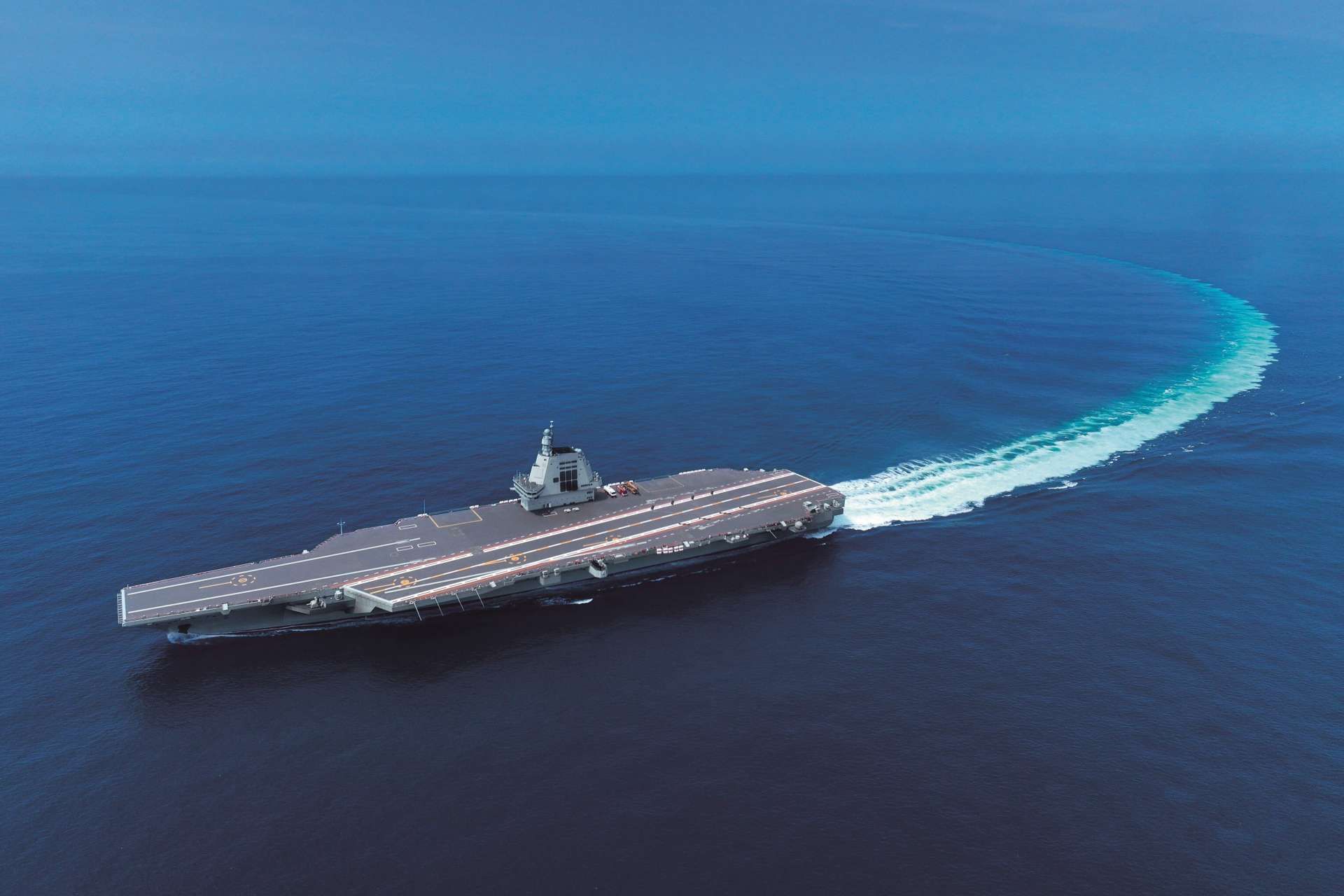Breaking News
China’s First Catapult-Equipped Aircraft Carrier Fujian Nears Next Milestone.
According to information published by the Chinese MoD on December 13, 2024, Wu Qian, spokesperson for China’s Ministry of National Defense, announced that trials for the Fujian aircraft carrier are proceeding as planned. He confirmed that further tests will follow as construction milestones are reached.
Follow Army Recognition on Google News at this link

China’s Fujian aircraft carrier, the first domestically designed and catapult-equipped vessel, progresses through sea trials. (Picture source: Chinese MoD)
The Fujian represents a transformative leap in China's naval capabilities, encapsulating the country's ambition to become a dominant maritime power. As the third and most advanced aircraft carrier in China's fleet, it marks a departure from earlier designs heavily influenced by Soviet models, showcasing a homegrown approach to naval engineering. Named after the southeastern coastal province of Fujian, which faces Taiwan across the strait, the carrier symbolizes China's broader strategic goals, including securing its maritime borders and projecting power on a global scale.
Launched in June 2022, the Fujian is the largest and most sophisticated aircraft carrier China has built to date, with a displacement of approximately 80,000 tons. Its sheer size and advanced features place it in a category comparable to U.S. Navy supercarriers, a testament to the rapid progress of China's shipbuilding industry. Unlike its predecessors, the Liaoning and Shandong, which rely on ski-jump ramps for launching aircraft, the Fujian is equipped with an electromagnetic catapult launch system. This technology, similar to the U.S. Navy's Electromagnetic Aircraft Launch System (EMALS), represents a significant leap forward. The system allows the launch of heavier and more diverse aircraft, including early-warning planes, electronic warfare platforms, and unmanned aerial vehicles, thereby enhancing the carrier's operational versatility.
The flight deck of the Fujian is flat and expansive, devoid of the ski-jump ramp characteristic of earlier Chinese carriers. This design change allows for more efficient operations, enabling higher sortie rates and accommodating a broader range of aircraft. The integration of an advanced catapult system also reduces the strain on carrier-based fighter jets during takeoff, extending their range and payload capacity. These features collectively enhance the carrier's role as a strategic asset capable of projecting power far beyond China's immediate periphery.
Beyond its flight operations, the Fujian is equipped with state-of-the-art radar and combat systems, reflecting China's emphasis on network-centric warfare. Its advanced radar array, likely capable of detecting both aerial and maritime threats, is designed to integrate seamlessly with other naval assets, enabling coordinated multi-domain operations. The ship's command and control systems are believed to incorporate artificial intelligence and data fusion technologies, further streamlining decision-making processes in complex combat scenarios.
The construction of the Fujian was a monumental endeavor, completed at the Jiangnan Shipyard in Shanghai, a facility renowned for its cutting-edge shipbuilding capabilities. The carrier's assembly involved significant advances in welding, modular construction, and other industrial techniques, underscoring China's ability to compete with global naval powers. Its launch also highlights the increasing self-reliance of China's defense industry, as the carrier's key components, including its catapult system, are believed to be domestically developed.
Strategically, the Fujian plays a crucial role in China's broader military modernization campaign, which aims to transform the People's Liberation Army Navy (PLAN) into a blue-water force capable of operating far from home waters. The carrier is expected to operate primarily in the Indo-Pacific region, where it will support China's territorial claims, secure vital sea lanes, and counterbalance the presence of other major naval powers. Its capabilities make it a key instrument for power projection, allowing China to assert its interests in contested areas such as the South China Sea and the Taiwan Strait.
However, the emergence of the Fujian also raises significant geopolitical implications. Its advanced features and potential role in military operations have heightened concerns among regional powers and the international community. The carrier's presence in sensitive maritime zones could exacerbate tensions, particularly with nations that view China's growing naval power as a threat to regional stability. In response, neighboring countries, including Japan, India, and Australia, have intensified their own naval modernization efforts, contributing to an arms race in the region.


























